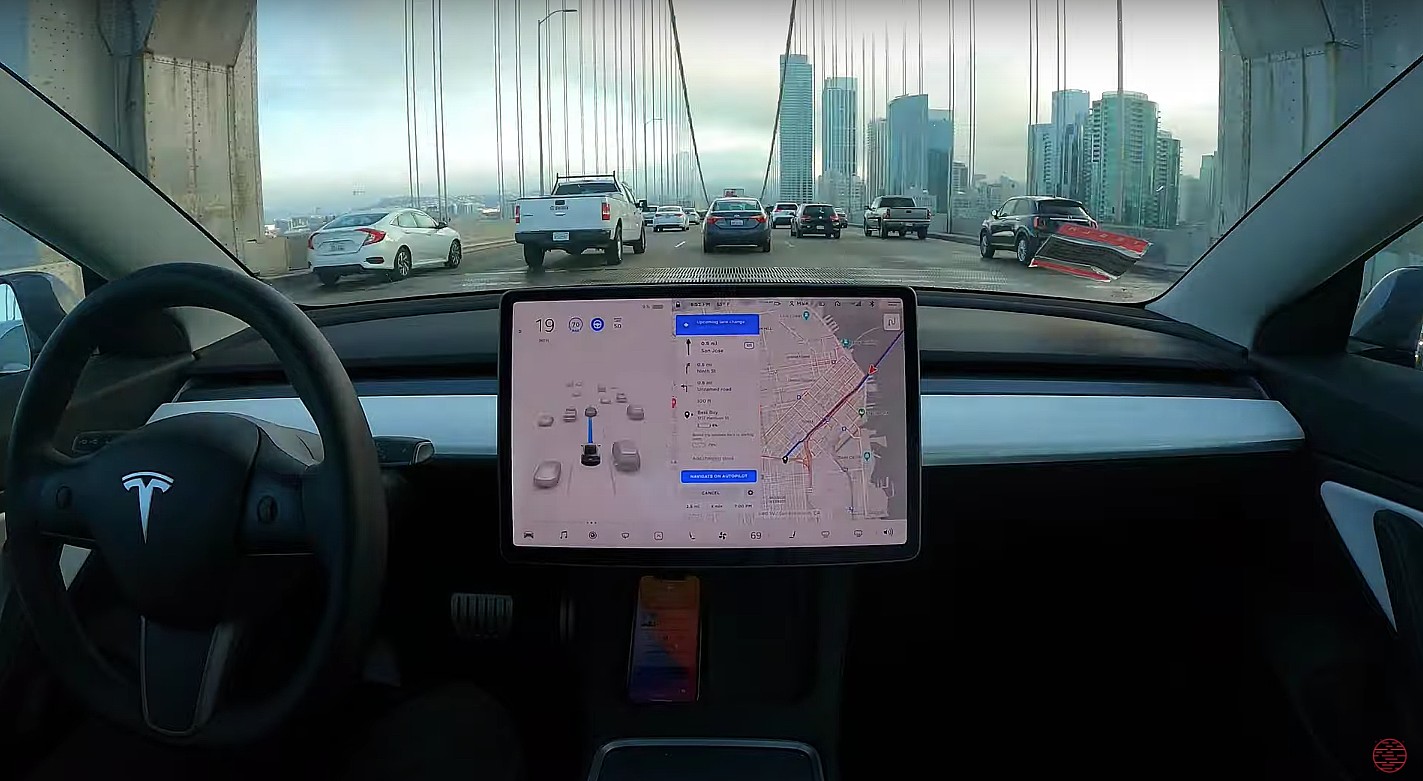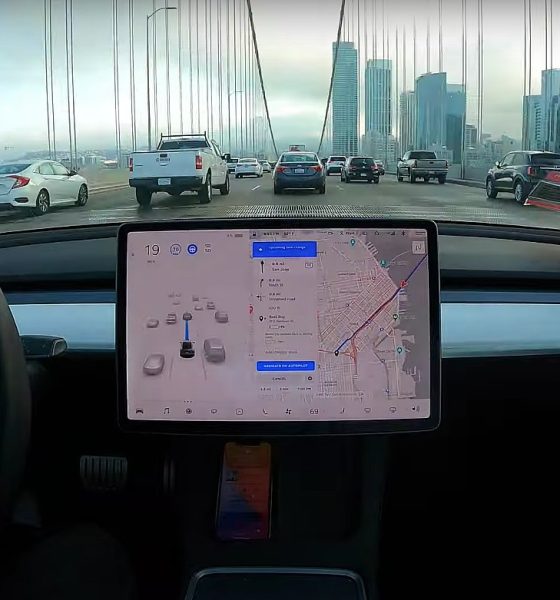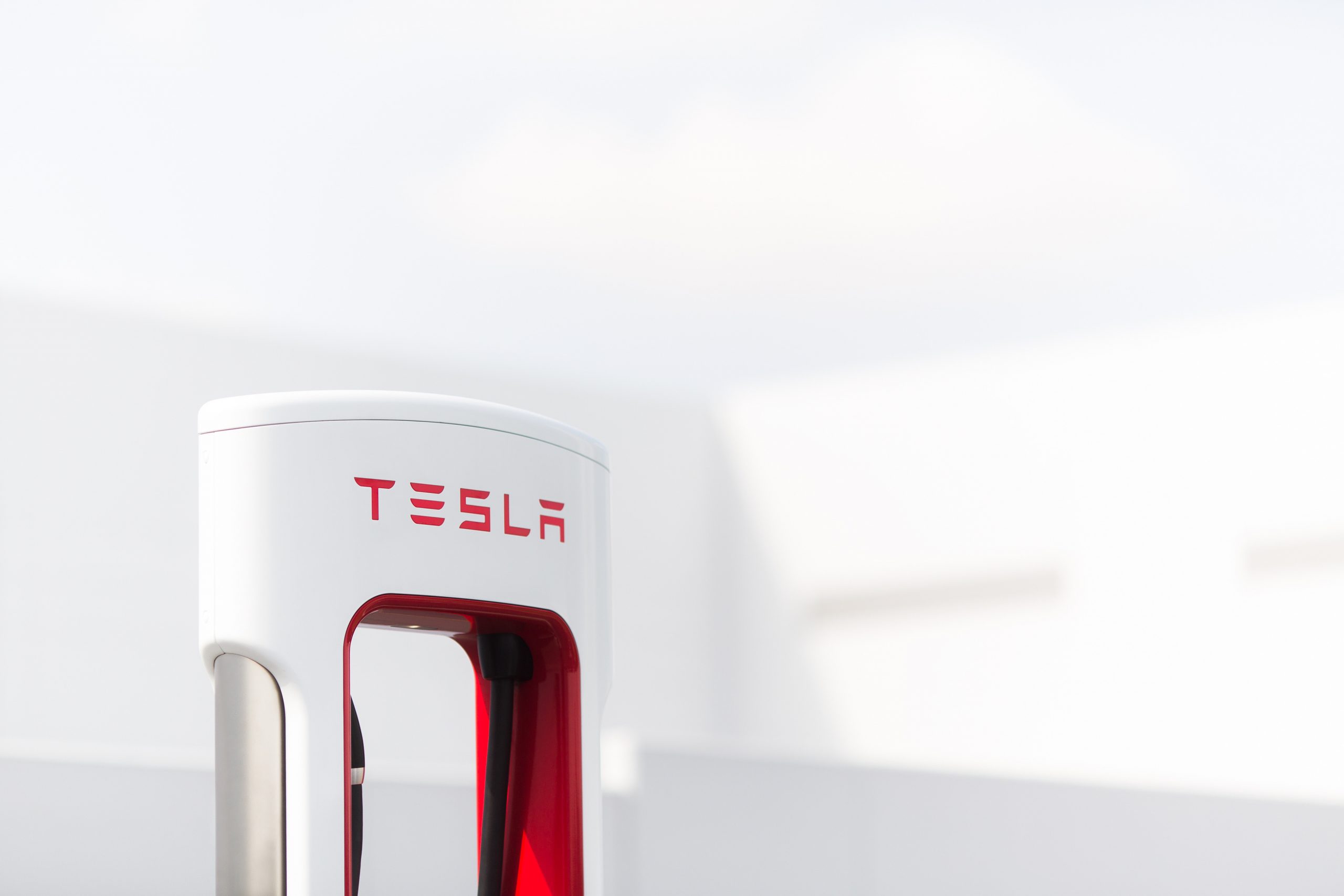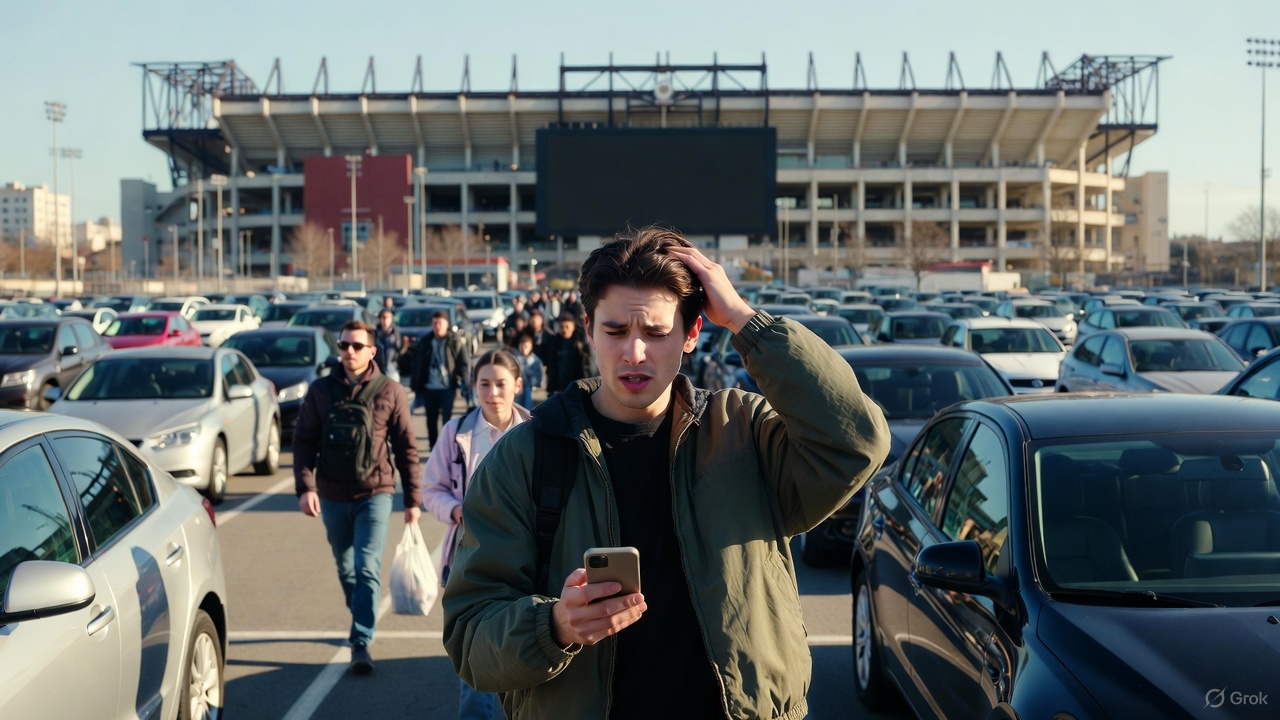

News
NHTSA’s incoming senior safety adviser has a serious anti-Tesla Autopilot and FSD bias
The National Highway Traffic Safety Administration (NHTSA) has recently confirmed that Duke University professor Missy Cummings is poised to be named as its new senior safety adviser. While her credentials as a computer science professor and background as a person knowledgeable about autonomous driving technologies would likely be an essential resource for the NHTSA, Dr. Cummings has exhibited something quite peculiar in social media — She appears to have a serious bias against Tesla, particularly surrounding the company’s Autopilot and Full Self Driving programs.
Over the years, Dr. Cummings, through her personal Twitter account, frequently posted overtly negative statements about Tesla, its vehicles, and its CEO Elon Musk. A number of Tesla owners and supporters who claimed to have not interacted with Dr. Cummings online also observed that they seem to have been preemptively blocked by the incoming NHTSA safety official.
Everybody has a personal bias about something they are passionate about. As such, it is understandable for the Duke University professor to adopt a skeptical stance on Tesla and its Autopilot and FSD programs. There is such a thing as a healthy dose of skepticism, after all. However, or at least based on the incoming NHTSA senior safety official’s Twitter feed, Dr. Cummings appears to have crossed the line from objective to subjective when it comes to Tesla and its technologies. The same goes for her stance regarding CEO Elon Musk. In March 2020, for example, Dr. Cummings seemingly joked about needing someone to stop her from punching Elon Musk in the face.
Punching jokes aside, the Duke University professor also stands as a present member of Veoneer, a Swedish LIDAR company. Publicly available SEC disclosures indicate that Dr. Cummings has received restricted stock units in Veoneer worth about $400,000 a year at present market prices. Considering that Tesla is a company directly competing with Veoneer in the way that it is developing autonomous driving systems with only a vision-based system, there seems to be a conflict of interest at play.
It should be noted that Dr. Cummings’ seat at Veoneer was not disclosed when she published a paper (which was later updated to remove inaccurate details about a fatal Tesla crash) criticizing systems such as Autopilot for their possible dangers. And so far, the incoming NHTSA senior safety adviser has not shared if she would be leaving her post at the Swedish LIDAR company, especially since she would soon be advising a US safety agency on driver-assist systems that adopt both LIDAR and non-LIDAR solutions.
Interestingly enough, Dr. Cummings’ criticism of Tesla and its Autopilot and FSD programs seems to stem from the fact that the company’s vehicles lack of equipment such as the LIDAR sensors provided by Veoneer. In an appearance at The Robot Brains Podcast earlier this year, the Duke University professor remarked that she is “basically an albatross around Elon’s and Tesla’s neck” and that “Where (she’s) going after is his (Elon Musk’s) desire to drop radar off of his cars and now go to vision-only.”
Dr. Cummings further noted that “There’s no vision research out there which doesn’t think that’s crazy and is gonna kill someone.” In a 2019 tweet, the incoming NHTSA safety official also noted that the NHTSA should require Tesla to disable Autopilot, since it “easily causes mode confusion.” This was a similar take from her post in 2018 when she noted that Elon Musk’s Tesla is the only “killer robot” present today.
Tesla CEO Elon Musk has noted on Twitter that the Biden administration’s appointment of Dr. Cummings as a senior safety official for the NHTSA is quite “odd,” and in a later post, Musk also observed that “Objectively, her track record is extremely biased against Tesla.” In response to Musk’s post, the incoming senior safety official for the NHTSA noted that she was “happy to sit down and talk with you (Musk) anytime.” Hopefully, such a discussion could really happen with as little bias from both sides as possible, and with absolutely zero punches being thrown at the Tesla CEO.
The NHTSA’s appears to have its eye on Tesla recently. Earlier this month alone, and as the agency’s probe on several Autopilot crashes on stationary emergency vehicles continued, the NHTSA asked Tesla to explain why it rolled out a safety improvement to Autopilot through an over-the-air software update without issuing a recall.
This was quite an interesting question from the NHTSA, seeing as the Autopilot update was done as proactive measure that would allow Teslas to operate in a safer manner on the road, not as a response to a defect. This was despite Tesla accounting for only nine crash injuries with first responder vehicles in the past 12 months, a small fraction of the 8,000 injuries that were reported by the Government Accountability Office (GAO) involving a stationary emergency vehicle in the United States in a year.
Don’t hesitate to contact us with news tips. Just send a message to tips@teslarati.com to give us a heads up.

Investor's Corner
SpaceX IPO is coming, CEO Elon Musk confirms
However, it appears Musk is ready for SpaceX to go public, as Ars Technica Senior Space Editor Eric Berger wrote an op-ed that indicated he thought SpaceX would go public soon. Musk replied, basically confirming it.

Elon Musk confirmed through a post on X that a SpaceX initial public offering (IPO) is on the way after hinting at it several times earlier this year.
It also comes one day after Bloomberg reported that SpaceX was aiming for a valuation of $1.5 trillion, adding that it wanted to raise $30 billion.
Musk has been transparent for most of the year that he wanted to try to figure out a way to get Tesla shareholders to invest in SpaceX, giving them access to the stock.
He has also recognized the issues of having a public stock, like litigation exposure, quarterly reporting pressures, and other inconveniences.
However, it appears Musk is ready for SpaceX to go public, as Ars Technica Senior Space Editor Eric Berger wrote an op-ed that indicated he thought SpaceX would go public soon.
Musk replied, basically confirming it:
As usual, Eric is accurate
— Elon Musk (@elonmusk) December 10, 2025
Berger believes the IPO would help support the need for $30 billion or more in capital needed to fund AI integration projects, such as space-based data centers and lunar satellite factories. Musk confirmed recently that SpaceX “will be doing” data centers in orbit.
AI appears to be a “key part” of SpaceX getting to Musk, Berger also wrote. When writing about whether or not Optimus is a viable project and product for the company, he says that none of that matters. Musk thinks it is, and that’s all that matters.
It seems like Musk has certainly mulled something this big for a very long time, and the idea of taking SpaceX public is not just likely; it is necessary for the company to get to Mars.
The details of when SpaceX will finally hit that public status are not known. Many of the reports that came out over the past few days indicate it would happen in 2026, so sooner rather than later.
But there are a lot of things on Musk’s plate early next year, especially with Cybercab production, the potential launch of Unsupervised Full Self-Driving, and the Roadster unveiling, all planned for Q1.
News
Tesla adds 15th automaker to Supercharger access in 2025

Tesla has added the 15th automaker to the growing list of companies whose EVs can utilize the Supercharger Network this year, as BMW is the latest company to gain access to the largest charging infrastructure in the world.
BMW became the 15th company in 2025 to gain Tesla Supercharger access, after the company confirmed to its EV owners that they could use any of the more than 25,000 Supercharging stalls in North America.
Welcome @BMW owners.
Download the Tesla app to charge → https://t.co/vnu0NHA7Ab
— Tesla Charging (@TeslaCharging) December 10, 2025
Newer BMW all-electric cars, like the i4, i5, i7, and iX, are able to utilize Tesla’s V3 and V4 Superchargers. These are the exact model years, via the BMW Blog:
- i4: 2022-2026 model years
- i5: 2024-2025 model years
- 2026 i5 (eDrive40 and xDrive40) after software update in Spring 2026
- i7: 2023-2026 model years
- iX: 2022-2025 model years
- 2026 iX (all versions) after software update in Spring 2026
With the expansion of the companies that gained access in 2025 to the Tesla Supercharger Network, a vast majority of non-Tesla EVs are able to use the charging stalls to gain range in their cars.
So far in 2025, Tesla has enabled Supercharger access to:
- Audi
- BMW
- Genesis
- Honda
- Hyundai
- Jaguar Land Rover
- Kia
- Lucid
- Mercedes-Benz
- Nissan
- Polestar
- Subaru
- Toyota
- Volkswagen
- Volvo
Drivers with BMW EVs who wish to charge at Tesla Superchargers must use an NACS-to-CCS1 adapter. In Q2 2026, BMW plans to release its official adapter, but there are third-party options available in the meantime.
They will also have to use the Tesla App to enable Supercharging access to determine rates and availability. It is a relatively seamless process.
News
Tesla adds new feature that will be great for crowded parking situations
This is the most recent iteration of the app and was priming owners for the slowly-released Holiday Update.

Tesla has added a new feature that will be great for crowded parking lots, congested parking garages, or other confusing times when you cannot seem to pinpoint where your car went.
Tesla has added a new Vehicle Locator feature to the Tesla App with App Update v4.51.5.
This is the most recent iteration of the app and was priming owners for the slowly-released Holiday Update.
While there are several new features, which we will reveal later in this article, perhaps one of the coolest is that of the Vehicle Locator, which will now point you in the direction of your car using a directional arrow on the home screen. This is similar to what Apple uses to find devices:
Interesting. The location arrow in the Tesla app now points to your car when you’re nearby. pic.twitter.com/b0yjmwwzxN
— Whole Mars Catalog (@wholemars) December 7, 2025
In real time, the arrow gives an accurate depiction of which direction you should walk in to find your car. This seems extremely helpful in large parking lots or unfamiliar shopping centers.
Getting to your car after a sporting event is an event all in itself; this feature will undoubtedly help with it:
The nice little touch that Tesla have put in the app – continuous tracking of your vehicle location relative to you.
There’s people reporting dizziness testing this.
To those I say… try spinning your phone instead. 😉 pic.twitter.com/BAYmJ3mzzD
— Some UK Tesla Guy (UnSupervised…) (@SomeUKTeslaGuy) December 8, 2025
Tesla’s previous app versions revealed the address at which you could locate your car, which was great if you parked on the street in a city setting. It was also possible to use the map within the app to locate your car.
However, this new feature gives a more definitive location for your car and helps with the navigation to it, instead of potentially walking randomly.
It also reveals the distance you are from your car, which is a big plus.
Along with this new addition, Tesla added Photobooth features, Dog Mode Live Activity, Custom Wraps and Tints for Colorizer, and Dashcam Clip details.
🚨 Tesla App v4.51.5 looks to be preparing for the Holiday Update pic.twitter.com/ztts8poV82
— TESLARATI (@Teslarati) December 8, 2025
All in all, this App update was pretty robust.








